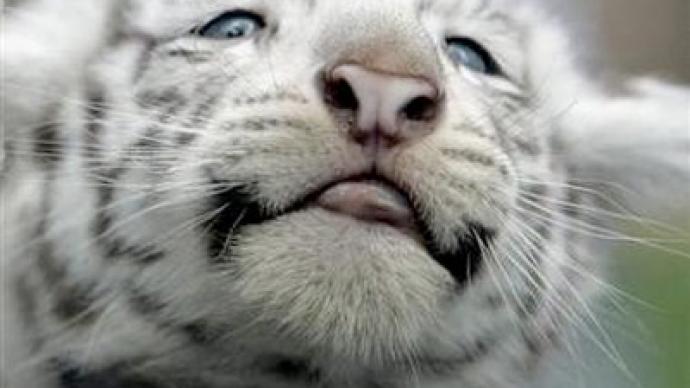Tiger cub that tweets

A Bengal tiger cub, abandoned by his mother, has become the main attraction at a Zoo in Russia's Urals and the owner of Twitter network account.
In March, tigress Hindu gave birth to a this cub. A day later, the zoo employees found the baby animal in the center of the cage. The employees waited for the tigress to pick up a toddling tiger cub, but soon realized the mother had simply discarded a diseased baby.The staff faced a choice – either save the animal or put him down. The head of the wild animal section at the zoo, Natalya Guseva, became a stand-in mother for the cub. And on the fourth day after the birth, the young tiger got the name Sakhi, which in native Bengali language means “royal”.“Animals throw away diseased babies if a mother understands the cub is somehow disabled,” Natalya Guseva, the head of wild animal section at Ekaterinburg Zoo, told Russia’s First TV Channel.Now the worst for Sakhi is far behind. The little tiger is putting on weight and has an everyday account on Twitter.“I am taking baths and having a massage,” reads his post. “I am learning to walk, trying to find where the edge is and it’s easy to fall. I’m licking my paws.”And one of the recent tweets: “Today my guests were journalists. I got afraid and started to hiss. I’ll show the pictures. Do you think they liked me?”But in spite of the animal’s sociability, the zoo employees advise to keep a distance from the baby tiger. Sakhi demonstrates independence and courage not typical for a cub, quite unlike his brothers and sisters, who prefer to stick close to their mother and not leave their cage. The zoo workers promise to walk the unique Bengal pet at the beginning of July.













